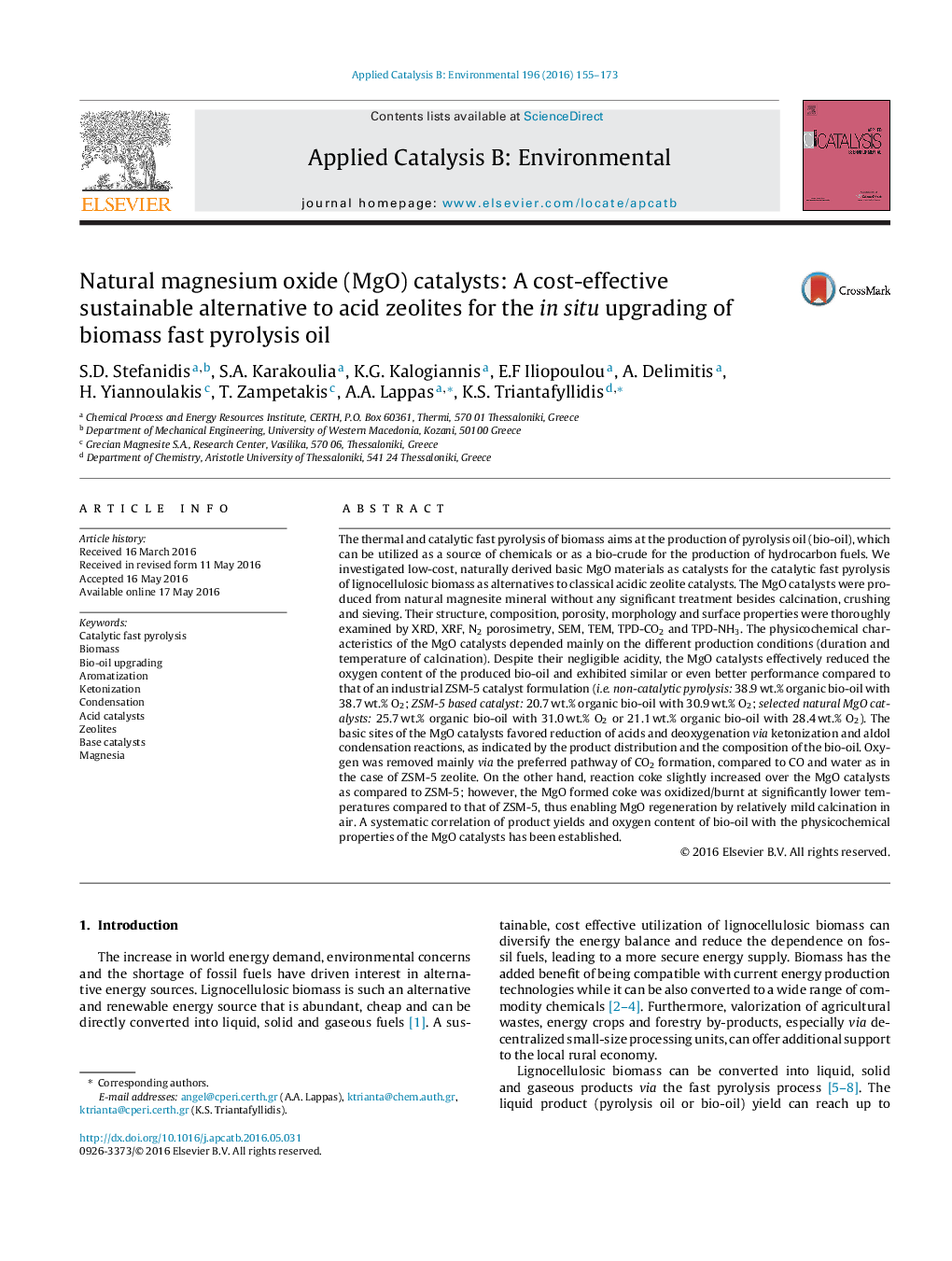| Article ID | Journal | Published Year | Pages | File Type |
|---|---|---|---|---|
| 44981 | Applied Catalysis B: Environmental | 2016 | 19 Pages |
•Thorough physicochemical characterization of natural MgO catalysts.•Basic MgO catalysts favor ketonization and condensation reactions in biomass pyrolysis.•MgO with smaller crystals/particles and higher surface area enhance bio-oil deoxygenation.•Basic – MgO catalysts offer a promising alternative to acidic – zeolite catalysts in BFP.
The thermal and catalytic fast pyrolysis of biomass aims at the production of pyrolysis oil (bio-oil), which can be utilized as a source of chemicals or as a bio-crude for the production of hydrocarbon fuels. We investigated low-cost, naturally derived basic MgO materials as catalysts for the catalytic fast pyrolysis of lignocellulosic biomass as alternatives to classical acidic zeolite catalysts. The MgO catalysts were produced from natural magnesite mineral without any significant treatment besides calcination, crushing and sieving. Their structure, composition, porosity, morphology and surface properties were thoroughly examined by XRD, XRF, N2 porosimetry, SEM, TEM, TPD-CO2 and TPD-NH3. The physicochemical characteristics of the MgO catalysts depended mainly on the different production conditions (duration and temperature of calcination). Despite their negligible acidity, the MgO catalysts effectively reduced the oxygen content of the produced bio-oil and exhibited similar or even better performance compared to that of an industrial ZSM-5 catalyst formulation (i.e. non-catalytic pyrolysis: 38.9 wt.% organic bio-oil with 38.7 wt.% O2; ZSM-5 based catalyst: 20.7 wt.% organic bio-oil with 30.9 wt.% O2; selected natural MgO catalysts: 25.7 wt.% organic bio-oil with 31.0 wt.% O2 or 21.1 wt.% organic bio-oil with 28.4 wt.% O2). The basic sites of the MgO catalysts favored reduction of acids and deoxygenation via ketonization and aldol condensation reactions, as indicated by the product distribution and the composition of the bio-oil. Oxygen was removed mainly via the preferred pathway of CO2 formation, compared to CO and water as in the case of ZSM-5 zeolite. On the other hand, reaction coke slightly increased over the MgO catalysts as compared to ZSM-5; however, the MgO formed coke was oxidized/burnt at significantly lower temperatures compared to that of ZSM-5, thus enabling MgO regeneration by relatively mild calcination in air. A systematic correlation of product yields and oxygen content of bio-oil with the physicochemical properties of the MgO catalysts has been established.
Graphical abstractFigure optionsDownload full-size imageDownload as PowerPoint slide
